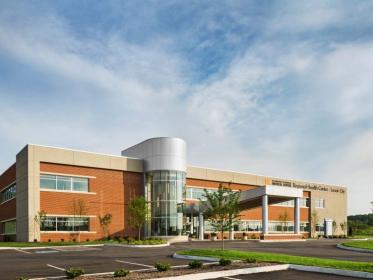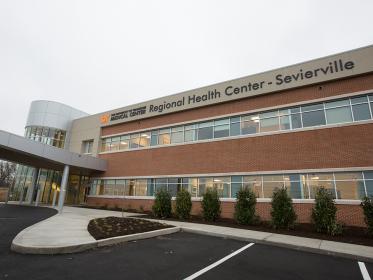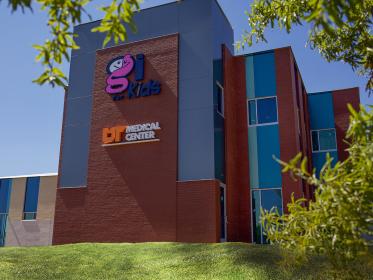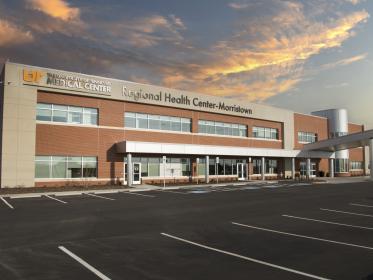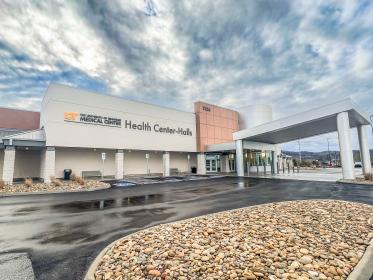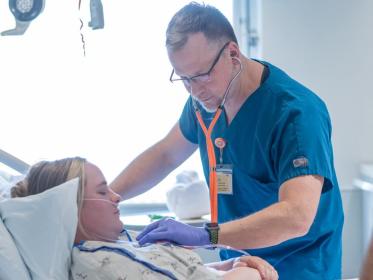Bronchial Thermoplasty for Asthma
Bronchial Thermoplasty (BT) is a non-drug procedure that reduces severe asthma symptoms in patients 18 or older who are not well controlled with standard asthma medications.
BT is expected to complement current asthma maintenance medications by providing long-lasting asthma control and improving asthma related quality of life of patients with severe asthma.
What is Bronchial Thermoplasty?
BT is a minimally invasive bronchoscopic procedure performed in three outpatient procedure visits, each treating a different area of the lungs and scheduled approximately three weeks apart. While bronchial thermoplasty has been shown to reduce severe asthma attacks and improve asthma control, it does not cure asthma or replace current asthma medications. You will need to continue to follow up with your primary asthma physician to manage your asthma.
What Are The Benefits And Risks Of BT?
BT has been shown to improve asthma-related quality of life and asthma control, including decreased severe asthma attacks, reduced ER visits and hospitalization, and less days lost from work, school and other daily activities due to asthma. As with any procedure, please speak with you doctor as there are risks and individual results can vary.
Who Can Have This Treatment?
The Alair Bronchial Thermoplasty System is indicated for the treatment of severe persistent asthma in patients 18 and older whose asthma is controlled with inhaled corticosteroids and long acting beta agonists. If you would like to determine if you are a good candidate for BT, call 865-524-7471 or speak with your doctor.
Who Performs Bronchial Thermoplasty?
Bronchial thermoplasty is performed at a hospital by a pulmonologist who is trained to perform bronchoscopy procedures and BT. There are several pulmonologists at The University of Tennessee Medical Center who do this treatment and can determine if BT is right for you. To make an appointment, call 865-524-7471.
How Does The Treatment Work?
- There will be three treatments, with three weeks in between each treatment.
- You will prepare for each treatment by taking a 50-mg steroid pill by mouth once a day for three days before the treatment.
- You will also take a 50-mg steroid pill on the day of treatment.
- On each BT treatment day, your doctor will test your lungs. He or she will do this by checking how much air you can blow out.
- Your doctor will make sure you don’t have an infection. An infection would delay the treatment.
- Your doctor will tell you what he or she will do during BT.
What Should I Expect During The Treatment?
Your doctor will:
- Give you medication to put you to sleep before the procedure.
- Put a small tube called a bronchoscope through your mouth into your airways, put the smaller Alair tube through the bronchoscope.
- The wires on its end will touch your airways. See figure to the right.
- Heat the wires on the end of the small Alair tube to reduce some of the airway muscle tissue. You won’t feel this because your doctor gave you medications. See figure below for how airways look before and after BT treatment.
- Move the small Alair tube to more places and treat them the same way.
- Take the small Alair tube and the bronchoscope out.
What Happens After Each BT Treatment?
You have to take a 50-mg steroid pill the day after. After your airways heal from your first treatment, you will go back to your doctor for your second treatment. Your doctor will treat more of your airways. After you get well from that, your doctor will treat the rest of your airways in your third treatment. Use your rescue inhaler if your asthma symptoms get bad. Always tell your doctor if you needed to use your rescue inhaler.
If you have this treatment, contact your doctor if your asthma symptoms get worse and do not get better after taking your rescue inhaler. If it is an emergency, dial 911.
Who cannot have this treatment?
You cannot have this treatment if you have:
- An implant with electronics
- Problems taking certain medications
- Have had this treatment before
- If you are younger than 18.
- An active respiratory infection
- Have had an asthma attack or changed your oral corticosteroid dose in the last 2 weeks
- A blood clotting problem
Speak with your doctor if you are considering changing your treatments or before stopping any treatment. If you need help finding a doctor, let us help you make an appointment.
Is BT Covered By Insurance?
Coverage policies and payment vary by payer. You are encouraged to contact your payer prior to having BT to confirm coverage and payment and to obtain pre-authorization as needed. BT has been pre-authorized on a case-by-case basis by several payers.
How Can I Learn More About BT?
If you are interested in learning more about the BT procedure, its benefits and risks, call 865-524-7471.
